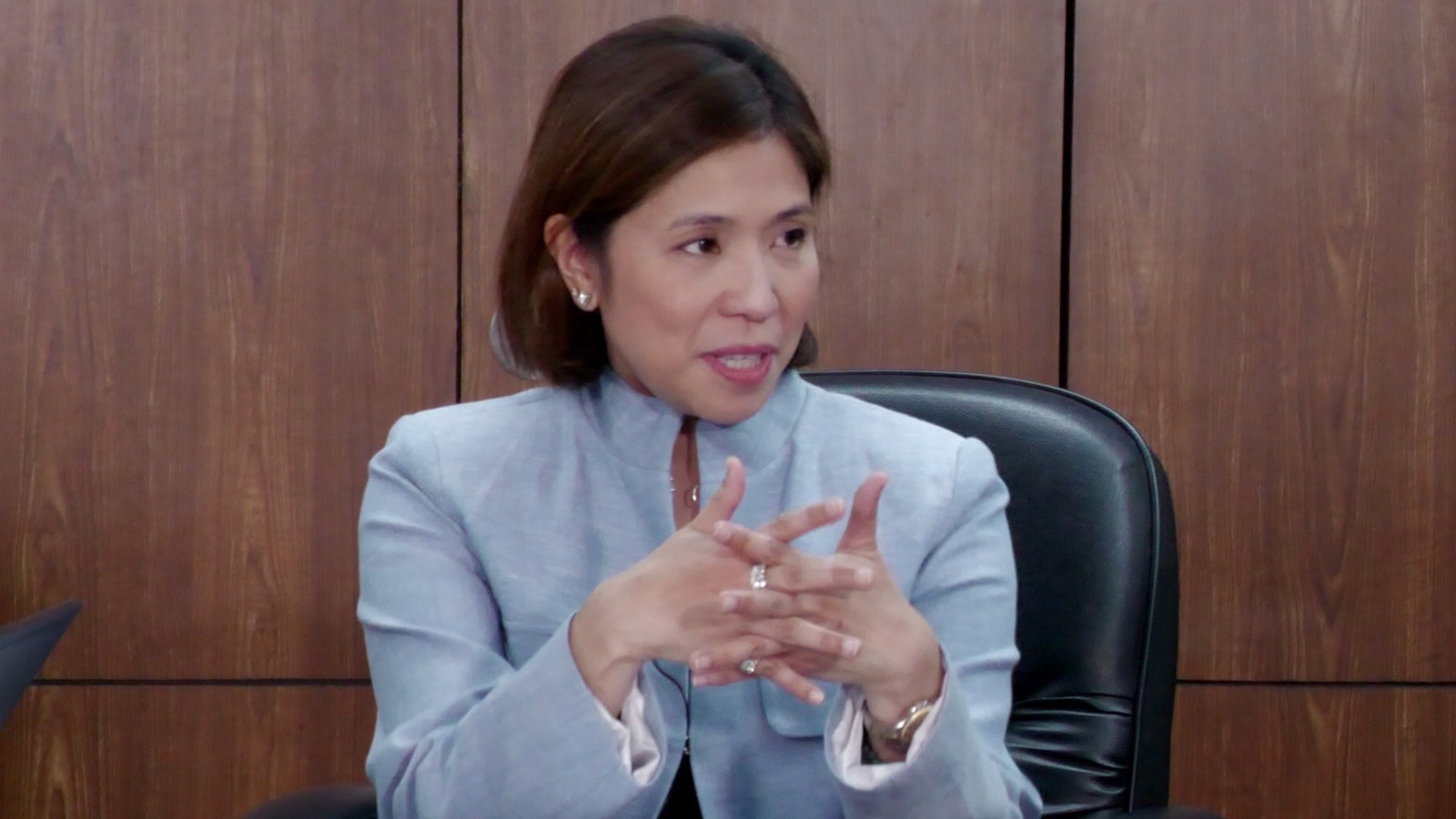‘A’ rating for PH possible as early as 2025, says Pangandaman
With its postpandemic fiscal consolidation program in place, Budget Secretary Amenah Pangandaman sees a good chance for the Philippines to level up its investment-grade status and debut as an ‘A’-rated sovereign as early as next year.
This aspiration to attain an ‘A’ sovereign credit rating is on top of the goal for the country to become an upper middle-income economy by 2025 and bring down poverty incidence to a single-digit level by the end of President Ferdinand Marcos Jr.’s term in 2028.
“Another goal is A-rating by next year,” Pangandaman said in a recent luncheon meeting with Inquirer editors.
READ: Philippines ranks first in Asia for budget transparency
Asked why she believes this goal is feasible, she said, ”Our fiscal consolidation is on track. We’ve been very consistent.”
“We’re quick in terms of policy decision. If it needs tweaking, we tweak right away. We meet regularly for possible legislative reforms, which are moving now, [some are] in the advanced stages,” she said.
Among the three major global credit rating agencies, the closest to an A grade that the Philippine government currently has is the BBB+ rating with stable outlook given by Standard & Poor’s (S&P). This is just one notch below the much-coveted A rating of S&P, whose rating scale ranges from D, the lowest, to the highest rating of AAA.
Meanwhile, the Philippine sovereign is rated two notches below the lowest A grade by Moody’s (Baa2) and Fitch Ratings (BBB).
The higher the credit rating, the lower the perceived credit risk is, thereby allowing the issuer to access funding at lower costs from development partners and international capital markets.
Savings
This allows a country to unlock interest savings that can then be channeled to other socially beneficial programs and projects.
Based on S&P’s definition, a BBB-rated borrower “has adequate capacity to meet its financial commitments.” However, adverse economic conditions or changing circumstances may “weaken” the capacity to meet its financial commitments.
Among the Philippines’ peers in the BBB+ rating category of S&P are Peru and Thailand.
Meanwhile, S&P defines a debtor with A rating as that with “strong capacity to meet its financial commitments but is somewhat more susceptible to the adverse effects of changes in circumstances and economic conditions than debtors in higher-rated (AA or AAA) categories.”
S&P has further subcategories for A rating: ‘A-‘, ‘A’ and ‘A+’. In its latest assessment, S&P recognized the Philippines’ above-average economic growth potential, strong external position and expected fiscal consolidation as the economy recovers.
Priority measures
It also welcomed efforts to prioritize infrastructure development and fiscal measures and cited crucial reforms such as the public-private partnership framework and the Corporate Recovery and Tax Incentives for Enterprises Act.
Meanwhile, other priority tax reform measures pending in Congress are: the imposition of value-added tax on foreign digital service providers and excise tax on single-use plastics; package 4 of the Comprehensive Tax Reform Program; rationalization of the mining fiscal regime; and the reform on the motor vehicle users’ charge.
In its June report, however, Fitch Ratings said there may be some risk of fiscal slippage given the government’s continued focus on economic growth and the approach of mid-term elections in May 2025. “Nevertheless, we note that overall budget balances have tended to be close to the targets in recent history,” it said.
The government is now targeting to keep its deficit at 5.6 percent of gross domestic product (GDP) in 2024 and 5.2 percent of GDP in line with Fitch’s forecasts.
Pangandaman underscored that transparency was playing a key role in making credit rating agencies appreciate the fiscal consolidation program.
“In terms of budget transparency, we’re No.1 in Asia,” she said, referring to the 2023 Open Budget Survey (OBS) results.
The Philippines climbed 7 points in the OBS for transparency, garnering an open budget index score of 75 out of 100 compared with just 68 in 2021, beating the government’s target score of 71 under the Philippine Development Plan 2023 – 2028. The report also ranked the country 15th worldwide while exceeding the global average score of 45.
Finance Secretary Ralph Recto is prioritizing nontax revenue collections to generate more funding for the Marcos administration’s priority infrastructure and socio-development projects. INQ

